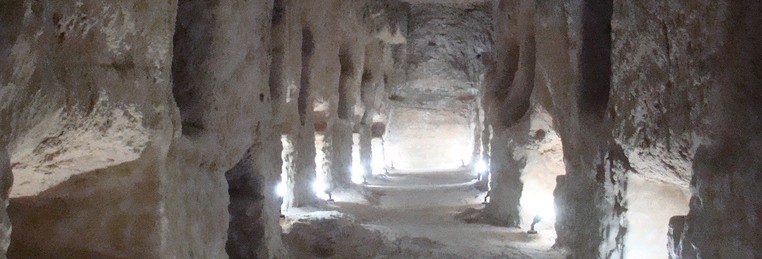From Temple to Church: Destruction and Renewal of Local Cultic Topography in Late Antiquity. Ed. Johannes Hahn, Stephen Emmel, and Ulrich Gotter. Boston: Brill Academic Publishers, 2008. http://www.worldcat.org.ezproxy.gc.cuny.edu/title/from-temple-to-church-destruction-and-renewal-of-local-cultic-topography-in-late-antiquity/oclc/646412854&referer=brief_results
Hahn, Emmel, and Gotter analyze the conversion of Egyptian pagan temples to churches by Christians beginning in Late Antiquity. They argue that the few well-documented cases of temple-conversion in Ancient Egypt can still be of use in learning about the phenomenon of temple-destruction and temple-conversion in Late Antiquity. The destruction of the Serapeum of Alexandria by the early Christians is discussed in full detail.
Haag, Michael. Alexandria Illustrated. Cairo; New York: American University in Cairo Press, 2004. http://www.worldcat.org.ezproxy.gc.cuny.edu/title/alexandria-illustrated/oclc/56910194&referer=brief_results
Haag argues in his book that present-day Alexandria is as magnificent as ancient Alexandria. He also provides a brief overview of the history Serapeum in Alexandria and its current condition and remaining features, such as Pompey’s Pillar and two Ptolemaic sphinxes.
Haag, Michael. Alexandria: City of Memory. New Haven, Conneticut; London: Yale University Press, 2004. http://www.worldcat.org.ezproxy.gc.cuny.edu/title/alexandria-city-of-memory/oclc/56540528&referer=brief_results
Haag argues that Alexandria was once a flourishing city full of art, culture, and racial diversity during Antiquity. This source mentions the Serapeum of Alexandria in passing a few times. Even though it doesn’t fully delve into the history of the Serapeum, this book contains information on how the site was later used by foreigners long after Antiquity.
McKenzie, Judith. The Architecture of Alexandria and Egypt: 300 BC- AD 700. New Haven: Yale UP, 2011. http://www.worldcat.org.ezproxy.gc.cuny.edu/title/architecture-of-alexandria-and-egypt-c-300-bc-to-ad-700/oclc/63680003&referer=brief_results
McKenzie argues that architecture in Alexandria (which consisted of Greek and Egyptian traditions) underwent development and gained prominence outside of Egypt during the Ptolemaic, Roman, and Late Antique periods. The Serapeum of Alexandria is discussed in detail several times throughout McKenzie’s book. The temple’s main architectural features, such as its underground passage, Egyptian statues, and wall paintings, are analyzed by McKenzie.
McKenzie, Judith, Sheila Gibson, and A. T. Reyes. “Reconstructing the Serapeum in Alexandria from the Archaeological Evidence.” The Journal of Roman Studies 94 (2004): 73-121. http://www.jstor.org.ezproxy.gc.cuny.edu/stable/4135011?&Search=yes&searchText=mckenzie&searchText=serapeum&list=hide&searchUri=%2Faction%2FdoBasicSearch%3FQuery%3Dserapeum%2Bmckenzie%26gw%3Djtx%26prq%3Dserapeum%26hp%3D25%26acc%3Don%26aori%3Da%26wc%3Don%26fc%3Doff&prevSearch=&item=1&ttl=25&returnArticleService=showFullText
McKenzie, Gibson, and Reyes argue that traces of wall-lines and architectual fragments can be used to reconstruct the Ptolemaic and Roman phases of the Alexandria Serapeum. They believe that these two pieces of evidence are necessary because the reconstructions will become the basis for suggestions by other scholars for the interpretation of the various structures in the complex, as well as for other comparisons of it with other sanctuaries.
Myliwiec, Karol. The Twilight of Ancient Egypt 1st Millenium B.C. Ithaca, NY; London: Cornell University Press, 2000. http://www.worldcat.org.ezproxy.gc.cuny.edu/title/twilight-of-ancient-egypt-1st-millenium-bc/oclc/468619031&referer=brief_results
Myliwiec argues that Egyptian statues of monarchs and their officials are difficult to identify due to lack of information. He approaches to solve this problem by using French Egyptologist Auguste Mariette’s 1851 discovery of the Serapeum in Saqqara. In addition, Myliwiec also provides historical context on the ancient rituals involving the Serapeum and the Apis bulls.
Rowe, Alan, and Etienne Drioton. Discovery of the Famous Temple and Enclosure of Serapis at Alexandria,. Le Caire: Impr. De I’Institut Français D’archéologie Orientale, 1946. http://www.worldcat.org.ezproxy.gc.cuny.edu/title/discovery-of-the-famous-temple-and-enclosure-of-serapis-at-alexandria/oclc/7424985&referer=brief_results
Rowe states that during his excavation of the Alexandria Serapeum in the 1940s, he and his team discovered two sacred enclosures in the temple: one Ptolemaic and the other Roman. He analyzes the main similarities and differences between the Ptolemaic and Roman Serapea in terms of architecture.
Stanwick, Paul Edmund. Portraits of the Ptolemies: Greek Kings as Egyptian Pharaohs. Austin: University of Texas, 2002. http://www.worldcat.org.ezproxy.gc.cuny.edu/title/portraits-of-the-ptolemies-greek-kings-as-egyptian-pharaohs/oclc/50511405&referer=brief_results
Stanwick argues that an Egyptological framework should be built to understand the Ptolemaic royal portraits, which have long been viewed from a classicist perspective. His argument is supported by a catalog of images of royal portraits and other related architectural remains.


